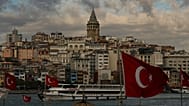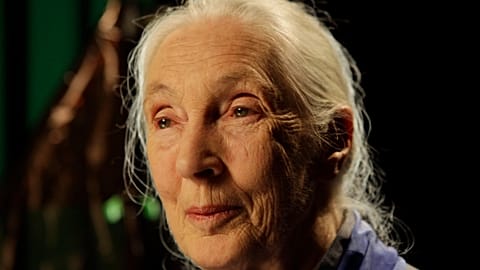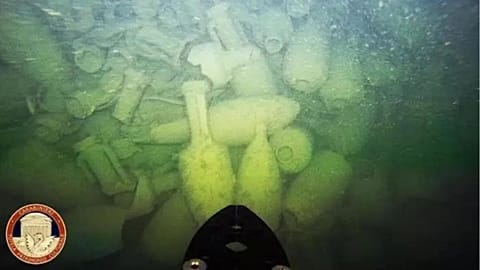'Hevelius' is a new Netflix series based on the story of Poland's worst maritime tragedy, when 56 people died in 1993. The highly anticipated Polish-made production has already been described as one of the 'most difficult and demanding cinematographic projects' to be staged in Poland's history.
On the night of 13 January 1993, the ferry 'Jan Heweliusz' sailed from the port of Świnoujście in Poland to Ystad in Sweden two hours late.
Difficult weather conditions had been reported prior to the voyage and the crew knew they were in for a difficult night at sea. No one, however, could have predicted that the challenging crossing would turn out to be the biggest peacetime maritime tragedy in the country's history.
A total of 56 people died, including 36 passengers and 20 crew members. Only nine people survived.
This event, still shrouded in mystery, is the subject of the Polish Netflix series 'Hevelius'.
The story is told from the perspective of the show's two main characters: the survivor of the tragedy, struggling with guilt, and the grieving widow who lost her husband in the disaster.
Set in the realities of communist Poland, the series paints a picture of a tense legal system in which, in the end, the ship's captain is the only person to blame - even though there was a more complex background to the event, and shared responsibility. By the time the ferry set sail in January 1993, it had already had 30 major incidents on its record, including a partial sinking just over a decade earlier.
"A big part of the series is dedicated to that disaster and shows it, but also an even bigger part is really about what happened afterwards. It tells the story of the people who stayed ashore, who lost loved ones, also the people who survived the disaster. It is not only a drama. It is not only a disaster film, but it is also simply a social drama. And a courtroom drama," explained Jan Holoubek, director of the series, in an interview with Euronews Culture.
Although it is a fictional series, the creators have devoted a great deal of work to reflect the reality of the events as closely as possible.
"Kasper Bajon, who wrote the script, went through dozens of files, talked to very many people who were affected by the disaster. So there is a great deal of truth here," adds Holoubek.
The production is notable for its grandeur, with a wide range of practical, special and computer effects used.
"The project is already one of the most difficult and demanding projects I am aware of so far in the history of Polish cinematography. Mainly because the scale of the number of fully digital shots, especially the shots of the Hevelius, the ferry sailing at night in a full storm, were very difficult shots and such a film having more than 60 fully digital shots I have not seen. In addition, there were about a thousand shots in total throughout the series, which required various types of special effects involvement, heavy or light, so in that respect it is certainly a unique series," explained special effects supervisor Krzysztof Hrycak.
The scale of the project reflects the dynamic development of the Polish film, television and post-production industry
"I think we are moving in a very good direction as Poland, because at least we, from production to production, are making films or series that have an increasing share of special effects, which from the point of view of complexity for us is quite important, but also generally, qualitatively these productions are getting better and better, well realised and with more and more panache," adds Hrycak.
Projects such as Hevelius show how wide a talent pool Polish cinema has today
"No less than 95 per cent of this series was made in Poland, by Polish hands, and it seems to me that the industry is absolutely competitive on a European or global scale. We have no complexes here," says Holoubek.
Hevelius is now available on Netflix.




















